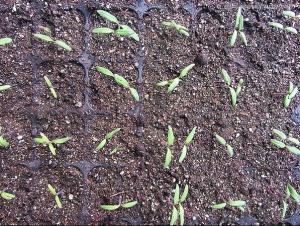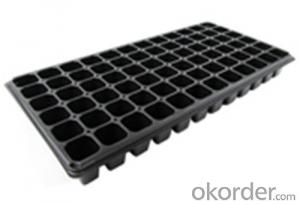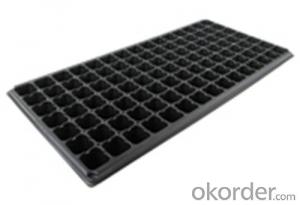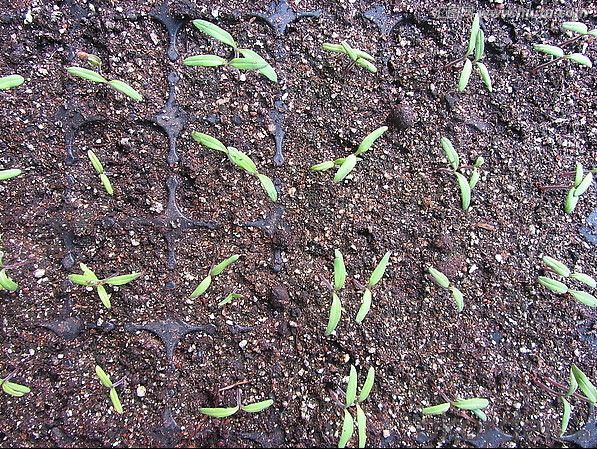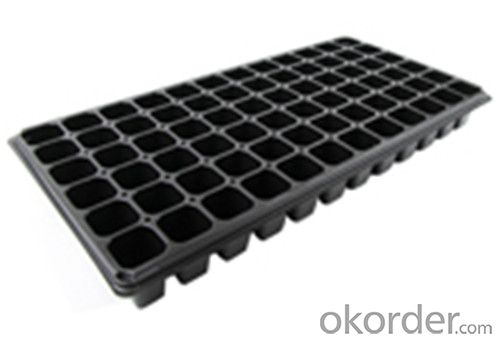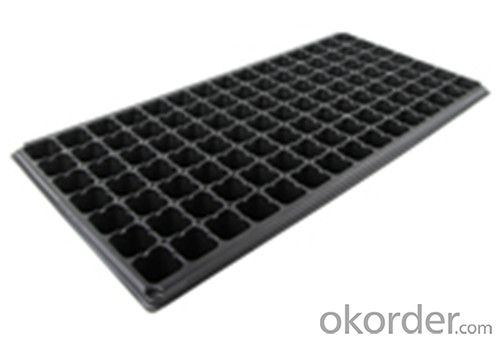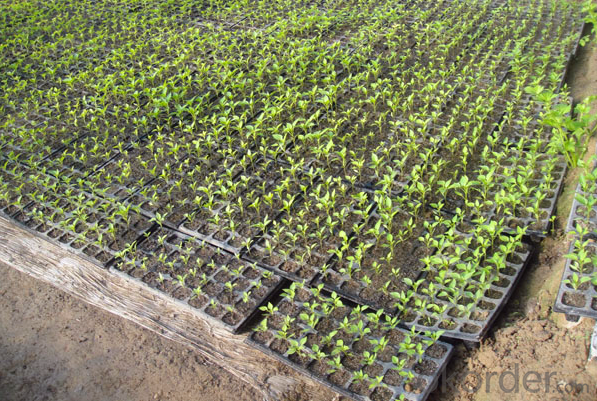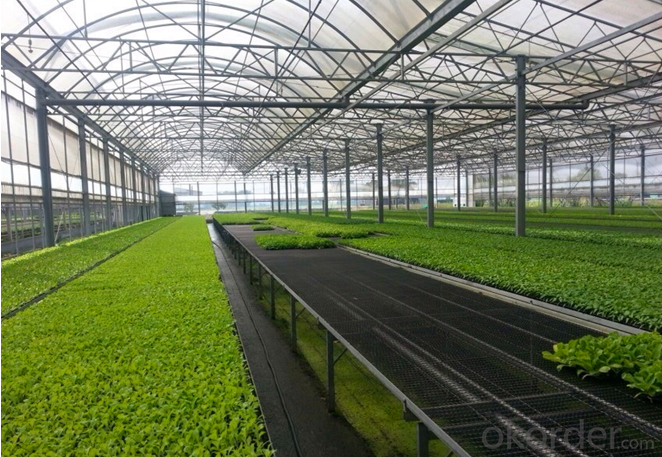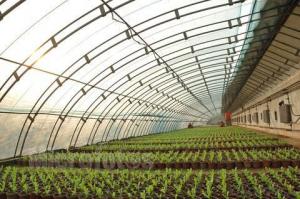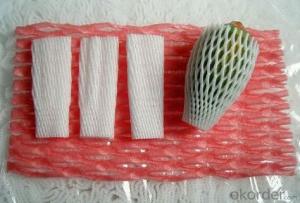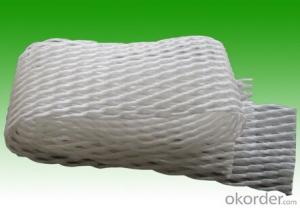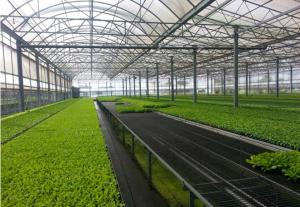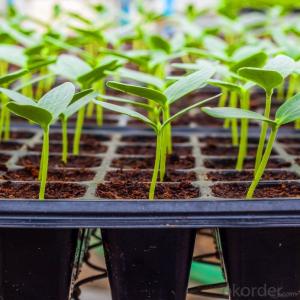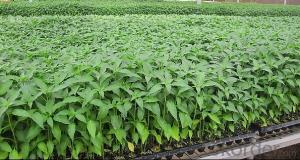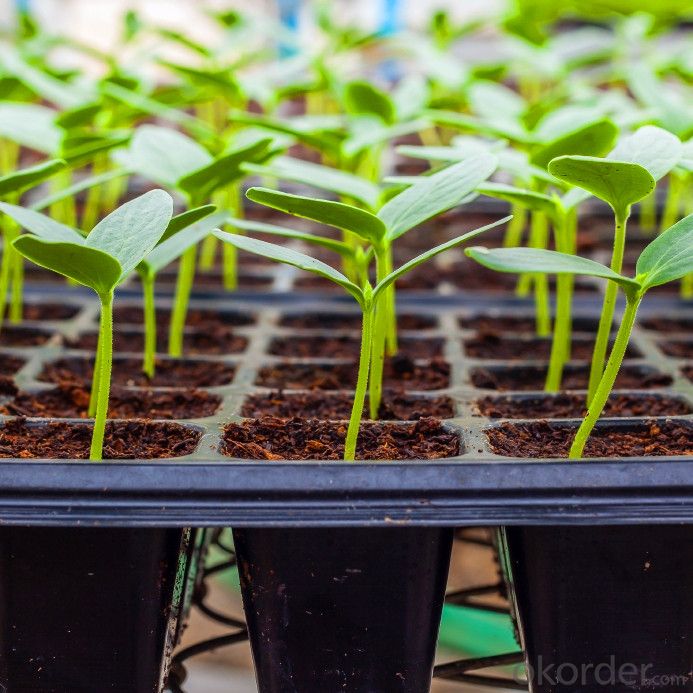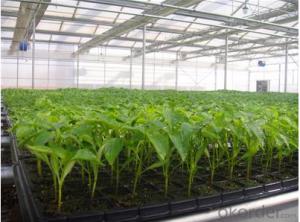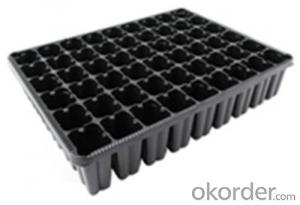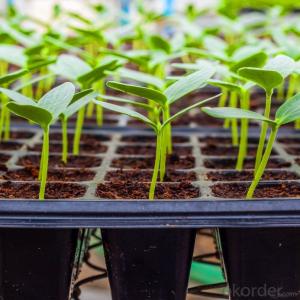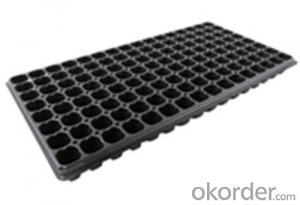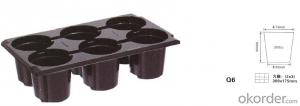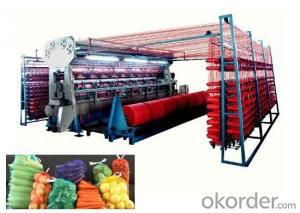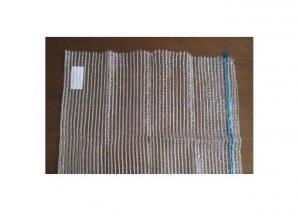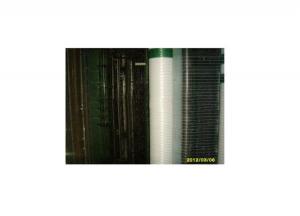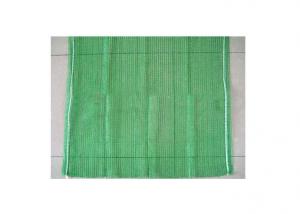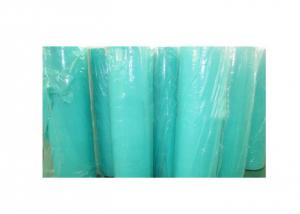Plastic Seedling tray Plastic Nursery Seeding Tray Seed Plant Propagator
- Loading Port:
- China main port
- Payment Terms:
- TT OR LC
- Min Order Qty:
- 1000 pc
- Supply Capability:
- 10000000 pc/month
OKorder Service Pledge
OKorder Financial Service
You Might Also Like
Structure of the seed tray: · Top quality and competitive price. · Variety design and good appearance. · Easy to use, and remove. · Durable and reusable. · Eco-Friendly.
Advantages: · Top quality and competitive price. · Variety design and good appearance. · Easy to use, and remove. · Durable and reusable. · Eco-Friendly.
Application: · Ideal for Starting seeds and Transplanting Seedling. · Suitable for both manual and automatic planting. · Suitable for Propagating Vegetables, Flowers and other plant from seed · in green-house or indoors.
Description Main Features of the seed tray: · Ideal for Starting seeds and Transplanting Seedling. · Suitable for both manual and automatic planting. · Suitable for Propagating Vegetables, Flowers and other plant from seed in green-house or indoors. Using time: · thickness of 0.5mm can be used 1 to 2 times. · thickness of 0.6mm can be used 3 to 4 times. · thickness of 0.7mm can be used 5 to 6 times. · thickness of 0.8mm can be used 7 to 8 times. · thickness of 0.9mm can be used 8 to 9 times. · thickness of 1.0mm can be used 8 to 10 times. Thickness vs. Weight: · Thickness of trays are from 0.5mm to 1.0mm. · 1.0mm: 155g±5g; 100pcs/ctn. · 0.9mm: 140g±5g; 120pcs/ctn. · 0.7mm: 110g±5g; 150pcs/ctn. · 0.6mm: 95g±5g; 180pcs/ctn. · 0.5mm: 80g±5g; 200pcs/ctn.
Seed Tray Specification: Materialps/pvcThickness0.5mm-1.5mm, standard:1mmWeight80g(±5)g-230g(±5)g, Standard weight:155g(±5)gSizelength:490mm-540mm, width:190mm-345mm,depth:25mm-150mm Standard:54mmX28mmCell count18-512Packagein cartonUsing time8-10 times
FAQ: Q:How Can I Get A Sample? A:You can get samples by communicate with our export sales. Q:How Long Is Delivery? A:Delivery time will be 7-25 days according to order quantity. Q:What Is The MOQ? A:Our MOQ is 1*20FT container quantity, allow to mix several items. Q:What Is Our Normal Payments Terms? A:Our normal payment terms now is T/T, L/C or Western Union,Papal. Q:How Do I Order Your Products? A:You can check our website for any items you interest and you can also get communication with our export sales and order for it accordingly. Q:What Kinds Of Material We Use In Our Product? A:Our plastic flower pots use material such as PP polymer or PE polymer.
|
- Q: How are plastic poultry feeders used in agriculture?
- Plastic poultry feeders are used in agriculture to provide a convenient and efficient way to feed poultry animals. These feeders are designed with durable plastic materials that can withstand weather conditions and are easy to clean. They typically have multiple feeding openings that allow several birds to feed simultaneously, reducing competition and ensuring all animals have access to food. Plastic poultry feeders also help to minimize wastage and contamination of feed, thus contributing to better hygiene and cost-effectiveness in poultry farming.
- Q: Can ground cover plants be used to create a wildlife-friendly garden?
- Yes, ground cover plants can definitely be used to create a wildlife-friendly garden. These plants provide numerous benefits for wildlife, such as offering food sources, shelter, and nesting sites. Ground cover plants can attract pollinators, including bees and butterflies, by providing nectar-rich flowers. They can also provide habitat for small mammals, reptiles, and amphibians. Additionally, ground cover plants help to prevent soil erosion, conserve water, and suppress weed growth. Overall, incorporating ground cover plants into a garden can enhance biodiversity and create a thriving ecosystem for various wildlife species.
- Q: How do agricultural plastic products help with moisture management in containers?
- Agricultural plastic products help with moisture management in containers by acting as a barrier that prevents excessive evaporation and retains moisture within the container. This helps to create a controlled environment that keeps the plants adequately hydrated and promotes optimal growth. Additionally, the plastic products can also prevent excessive watering and drainage, ensuring that plants receive the right amount of water and nutrients.
- Q: What is the best ground cover for a desert garden?
- One of the best ground covers for a desert garden is gravel or rock mulch. It helps retain soil moisture, minimizes evaporation, and suppresses weed growth while adding an attractive and low-maintenance aesthetic to the landscape.
- Q: How do agricultural plastic products help with crop pollination?
- Agricultural plastic products, such as bee hives and blossom bags, can help with crop pollination by providing a controlled environment for pollinators like bees. These products attract and house bees, ensuring their presence in the fields and increasing the chances of efficient pollination. Similarly, blossom bags protect flowers from external factors like wind and rain, promoting successful pollination.
- Q: Can nursery trays be used for starting bulb seedlings?
- Yes, nursery trays can be used for starting bulb seedlings. The trays provide the necessary space and drainage for the bulbs to develop roots and shoots. It is important to ensure that the trays have sufficient depth to accommodate the bulb's growth and that they are filled with a suitable seed starting mix.
- Q: What are the various materials utilized in the manufacturing of agricultural plastic products?
- <p>Agricultural plastic products are made from a variety of materials, primarily polyethylene (PE), polyvinyl chloride (PVC), and polypropylene (PP). These materials are chosen for their durability, flexibility, and resistance to environmental factors. Polyethylene is widely used for its strength and UV resistance, making it ideal for greenhouse films and silage covers. PVC is valued for its rigidity and chemical resistance, often used in irrigation pipes and fittings. Polypropylene is appreciated for its resistance to chemicals and high-temperature tolerance, suitable for mulch films and storage containers. Other materials like polyethylene terephthalate (PET) and biodegradable plastics are also used in certain applications, with PET being strong and lightweight, and biodegradable plastics being environmentally friendly options for short-term use.</p>
- Q: Can ground cover plants be used to replace traditional mulch?
- Yes, ground cover plants can be used as an alternative to traditional mulch. They provide similar benefits, such as preventing weed growth, retaining soil moisture, and improving soil health. Additionally, ground cover plants can add aesthetic appeal to the landscape and create a natural habitat for beneficial insects and wildlife. However, it is important to consider factors like maintenance requirements, desired appearance, and specific plant species suitability for the area before replacing traditional mulch entirely with ground cover plants.
- Q: The first plastic, was made from milk and what other ingredient ?
- I know nothing of its composition, but the first plastic, as I understand it, was called Bakelite, and was used for handles on cooking equipment so they wouldn't burn your hands.
- Q: What are some common types of ground cover plants?
- Some common types of ground cover plants include creeping thyme, creeping phlox, vinca minor, sedum, and ajuga.
Send your message to us
Plastic Seedling tray Plastic Nursery Seeding Tray Seed Plant Propagator
- Loading Port:
- China main port
- Payment Terms:
- TT OR LC
- Min Order Qty:
- 1000 pc
- Supply Capability:
- 10000000 pc/month
OKorder Service Pledge
OKorder Financial Service
Similar products
Hot products
Hot Searches
Related keywords
